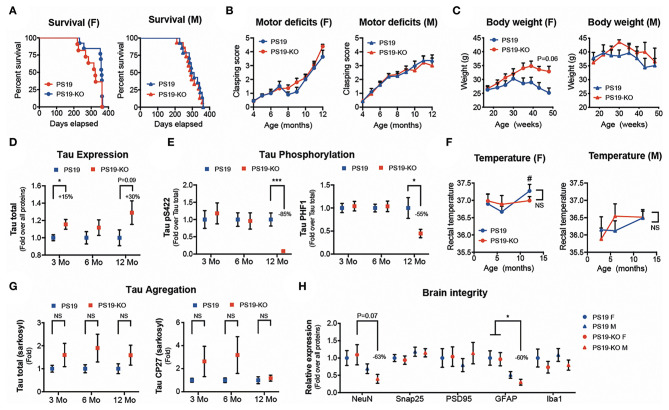Figure 1.
Characterization of PS19 mice lacking the miR-132/212 cluster. (A) Kaplan-Meier survival curves, (B) clasping scores, and (C) body weight of PS19 and PS19-KO mice that are deficient for the miR-132/212 cluster. PS19 mice (JAX No. 008169) were bred with full miR-132/212 KO mice as before (61). Graphs were divided by sex. No significant changes were observed between mouse models. Kaplan-Meier and one-way ANOVA. N = 6–16 mice per group. (D) Western blot quantifications of cortical total tau expression and phosphorylation (Ser422 and PHF1 epitopes) (E) at different ages (3–12 months). N = 12–16 mice per group, mixed sex. Unpaired t-test, where *P < 0.05, ***P < 0.001. (F) Rectal temperature at sacrifice. # denotes significant changes (multiple t-tests, P < 0.05) between PS19 males and females at 12 months. (G) Western blot quantifications of cortical sarkosyl-insoluble tau (Tau total and CP27) at different ages. N = 9–16 mice per group, mixed sex. Unpaired t-test. (H) Western blot quantifications of cortical endogenous NeuN, Snap25, PSD95, GFAP, and Iba1 in 12-month-old PS19 and PS19-KO mice. N = 9–10 mice per group, divided by sex. One-way ANOVA with multiple comparison, where *P < 0.05. Error bars represent SEM. In (D-G), the groups of mice were analyzed separately per age.

